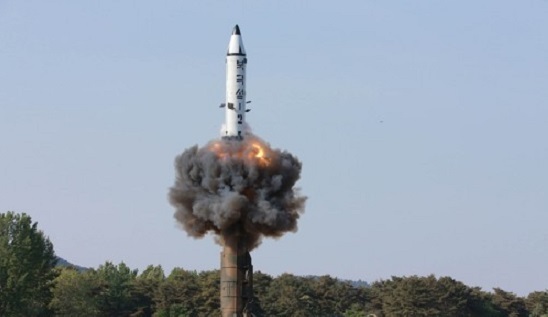NK defies international pressure with missile launch
North Korea fired at least one short-range ballistic missile into the East Sea on Monday, said South Korea’s military, in an apparent effort to demonstrate its advanced ballistic missile capability and use it as leverage for potential negotiation over the regime’s nuclear program.
The suspected Scud-type missile lifted off at 5:39 a.m. from the North’s coastal city of Wonsan and flew at least 450 kilometers, according to Seoul’s Joint Chiefs of Staff. The Japanese government said the missile landed in the country’s exclusive economic zone, but there was no report of damage in the area.
Coincided with an ongoing joint navy drill and a scheduled US missile defense exercise, the launch was Pyongyang’s latest effort to advance its missile capability designed to develop a nuclear-tipped intercontinental missile and disrupt South Korea’s anti-missile system, military officials and analysts said.
 |
| North Korea launches a mid-range ballistic missile in this undated file photo. (For Use Only in the Republic of Korea. No Redistribution) (KCNA-Yonhap) |